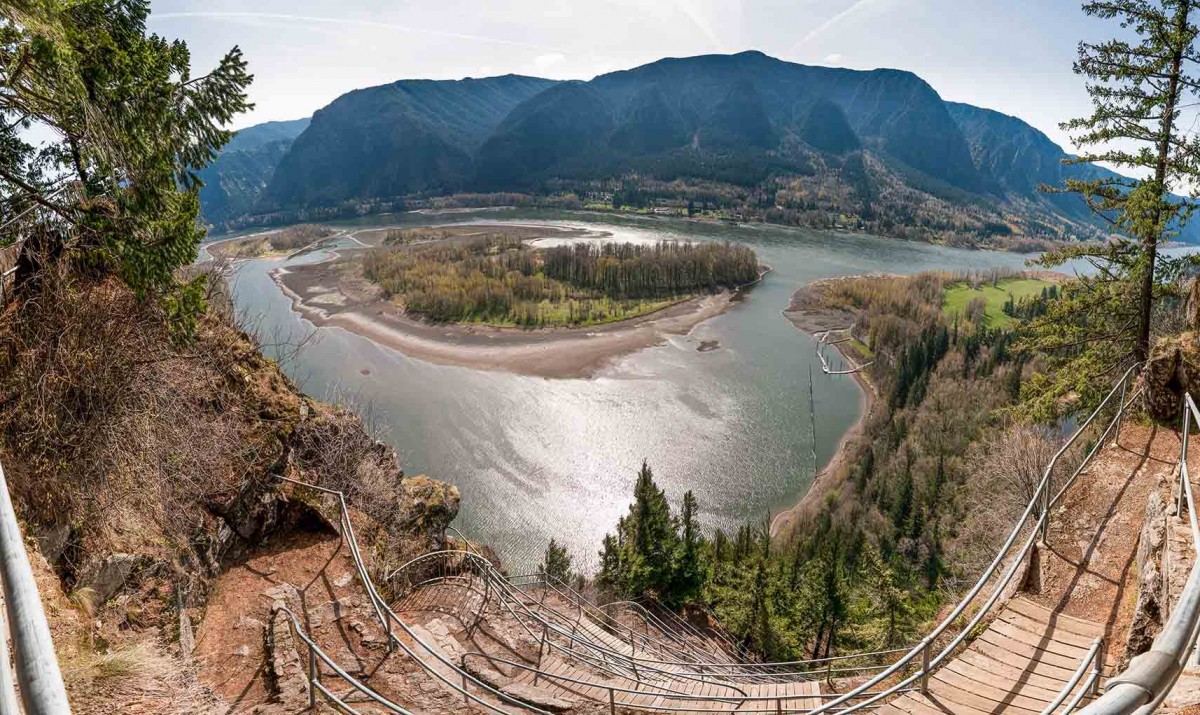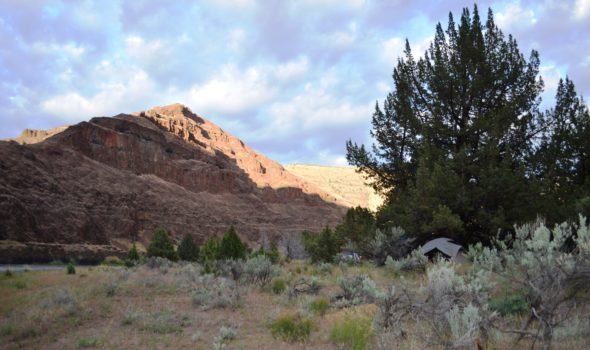The Big Picture
Named a National Scenic Area in 1986, the Columbia River Gorge is a world-renown destination. Since our beginnings, we’ve worked to ensure its natural splendor is conserved and cared for. Today, we are the owners and caretakers of Pierce Island, one of the most iconic Gorge islands, located just beneath Beacon Rock. Here we are improving habitat for spawning salmon, Roosevelt elk, raptors, and native plants. We also work with partners to ensure people can enjoy the Gorge’s splendor: Two of our properties permanently protect sections the flagship Cape Horn Trail.
Why It Matters
Protecting the Columbia River Gorge doesn’t stop at the boundary of the National Scenic Area. To protect the Gorge, we must protect rivers, and forests that surround it, including place like our lands on Wind River, an important river for Chinook, steelhead, and cutthroat trout. One example of the Gorge’s fragility? Some 800 species of wildflowers grow here, 15 of them nowhere else on Earth. Pierce Island, for example, is home to Rorippa Columbiae a state-endangered member of the yellowcress family known to grow in only two places in Washington. We are working to ensure its story does not become one of extinction.

